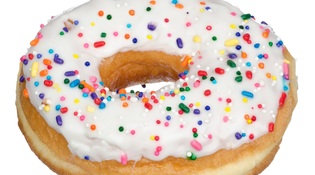 loading
loading
FindingsWhy we’re helpless against doughnutsHigh-fat, high-carbohydrate foods trick the brain.  Evan-Amos/Wikimedia CommonsView full imageWhy is it so easy to overeat cake, chips, or ice cream? Perhaps because they’re unnatural, a Yale study suggests. Many processed foods have both high fat and high carbohydrate, in ratios found nowhere in nature. They may trick the brain into giving us an outsized reward for eating these foods. In animals, the gut tells the brain when it encounters a carbohydrate or a fatty food. This helps the brain estimate how much energy the food contains and guide the animal to eat a particular amount. The same thing likely happens in humans. But during an evolution spent eating raw meat, nuts, and woody plants in separate portions—as they’re rarely found together in the wild—the gut typically sent one signal at a time. So “the brain typically did not see both signals at the same time,” says senior author Dana Small, professor of psychiatry and associate professor of psychology at the School of Medicine. To study what happens when it does, her team asked people to participate in an auction during an MRI brain scan. Participants bid on foods that were high in fat and low in carbohydrate (like cheese), high in carbohydrate but low in fat (like a lollipop), or high in fat and carbohydrate (like cake). They wound up bidding more for the foods with fat and carbohydrate, and their brain scans indicated greater responses in the reward circuits—even though all options contained the same amount of energy. “It’s an unconscious circuit—which means it’s much harder to modulate based on knowing that [a food is] bad for you,” says Small. “These foods drive behaviors and get us to consume them.” (The study appeared in the July 3 issue of Cell Metabolism.)
The comment period has expired.
|
|